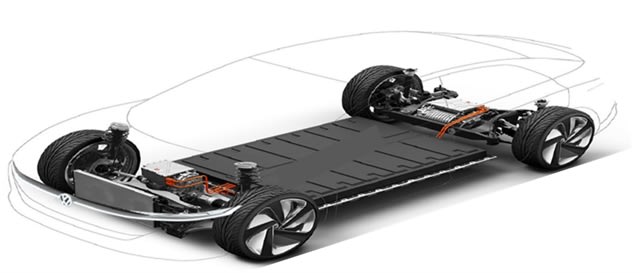hootrpootr
Aerospace
- Feb 28, 2020
- 27
Hello all,
I'm creating a 3D bolt load distribution spreadsheet that accepts loads in 3 directions and distributes them into a 3 dimensional pattern of bolts (so the pattern does not have to be on a single plane). I'm honestly lost as to why the spreadsheet isn't working.
I found this windows program, which is basically exactly what I'm trying to do, but I can't replicate the results ( My spreadsheet matches this program all the way up to the calculation of the "r^2" weighting components, but seems to be doing something wrong in the final determination of the loads on each bolt.
My method is as follows (and is a standard 2d method):
1. Input fastener coordinates and applied loads (applied loads assumed to be at origin)
2. Determine ak based on the weighting of the individual bolt diameters
3. Determine centroid of bolt group
4. Determine moments (Mx, My, Mz) created by Px, Py, Pz about centroid
5. Determine linear forces generated by Px, Py, Pz
6. Determine fastener distance components (dx, dy, dz) from centroid
7. Calculate the r^2 components at each plane, and the sum(ak*r^2) at each plane
8. Determine the components of each fastener of the forces at each plane due to rotation
9. Add the linear and rotational components in each direction to determine the total force in each direction.
If you decide to brave my spreadsheet, apologies for anything confusing. But also, the help is much appreciated.
I'm creating a 3D bolt load distribution spreadsheet that accepts loads in 3 directions and distributes them into a 3 dimensional pattern of bolts (so the pattern does not have to be on a single plane). I'm honestly lost as to why the spreadsheet isn't working.
I found this windows program, which is basically exactly what I'm trying to do, but I can't replicate the results ( My spreadsheet matches this program all the way up to the calculation of the "r^2" weighting components, but seems to be doing something wrong in the final determination of the loads on each bolt.
My method is as follows (and is a standard 2d method):
1. Input fastener coordinates and applied loads (applied loads assumed to be at origin)
2. Determine ak based on the weighting of the individual bolt diameters
3. Determine centroid of bolt group
4. Determine moments (Mx, My, Mz) created by Px, Py, Pz about centroid
5. Determine linear forces generated by Px, Py, Pz
6. Determine fastener distance components (dx, dy, dz) from centroid
7. Calculate the r^2 components at each plane, and the sum(ak*r^2) at each plane
8. Determine the components of each fastener of the forces at each plane due to rotation
9. Add the linear and rotational components in each direction to determine the total force in each direction.
If you decide to brave my spreadsheet, apologies for anything confusing. But also, the help is much appreciated.




